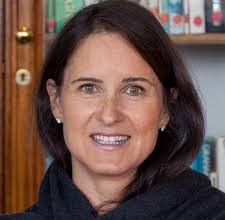By Henry Owino
About 1 in 5 people develop cancer in their lifetime. But contrary to beliefs, only 1 in 9 men and 1 in 12 women of those suffering from cancer succumb.
Many people, particularly in the resource poor nations of Africa have come to believe that cancer is synonymous with death and rarely bother to seek medical attention once diagnosed with the condition, and resign to their fate thinking that it is incurable.
Benda Kitheka, Founder and Executive Director of KHA is perturbed by misconception and misinformation spreading on the social media platforms. Some of the myths are real attributes to late diagnosis and discovery cervical cancer due to community stigmatization.
According to Kitheka, the deception is so rife that there is need for public education. “There is need for sensitization to create awareness and counter the existing myths,” said officials from the KHA during a training workshop for professional journalists about cancer, specifically cervical cancer.
The training was meant to help journalists report from informed background, educate and sensitive the public on the importance regular screening.
Kitheka regrets that some of the myths and disinformation are meant to cause fear and discourage patients, caregivers and families from seeking medical attention, providing moral support or financial support. She admits there is much more needed to be done to invalidate misinformation spreading outside there.
The KHA experts maintained that the fight against cervical cancer can be easily won, if journalists are onboarded. Countering propaganda circulating on social media meant to harm individuals and families battling cancer is best done by professional journalists.
“We would like journalists like you to walk with us in this journey; creating awareness on cervical cancer. Media is very powerful. Named as ‘Fourth Estate’ due to your obligations, and influence you have on government, policy makers and society at large. So, media is trusted for accurate information hence our collaboration,” Kitheka said.
The expert noted that when erroneous stories about cancer are repeatedly told especially in this era of technology without demystifying, they tend to be taken as gospel truth. It is one reason among many others that informs the need for collaboration with journalists with the aim to disseminate accurate information for the public good.
“For instance; cervical cancer is usually common with sexually active women and to deter this, regular screening for any woman aged between 25 to 49 years is very important for early detection. Although, even women ages 50 to 65 years old are also at high risk of cervical cancer,” Kitheka cautions.
The KHA Director who is also the Lead Secretariat at African Cervical Health Alliance (ACHA) says currently, vaccination is available for young girls aged between 10 to 14 years old. The vaccination is highly commendable for the girls to boost their immune system against cancer.
“It is much better preventing cervical cancer through vaccination or regular screening to ascertain one’s status than regretting later in life when it’s complicated and costly,” Kitheka advises. This is because cancer usually starts with signs and symptoms that can last more than 10 years before going into full blown cancer,” She adds.
Cervical Cancer Conquerors
Joan Wangare is cervical cancer survivor and is now a champion and advocates for cervical cancer screening, prevention and treatment. According to her testimony, she underwent pain but had determination to overcome the disease, and she did that today she is able to narrate her story as an encouragement to others.
From a personal testimony of what she went through, Wangare encourages cervical cancer patients, caregivers and families never to give up on treatment. She is even more than ready and willing to offer moral support to patients owing to her past experiences.
“Cervical cancer is preventable and treatable. I speak from personal experience not hearsay as a caregiver or even close family member. My goal is to help to destigmatize cervical cancer and impacts countless lives,” Wangare inspires.
On the other hand, Judy Wanyoike survived cervical and lung cancers. Today, she is on the forefront debunking misconception and misinformation in any forum she attends. Her testimony of surviving cancer for more than 10 years and counting, affirms to the public that cancer is not a death sentence.
Wanyoike urges fellow women to ignore all cultural or religious believes and myths on cervical cancer and seek treatment. Before contracting it, frequent screening is key for early detection, prevention and treatment because it is curable.
The duo survivors reiterate cervical cancer has early symptoms and signs that can be spotted and should not be assumed: Blood spots or light bleeding between or following periods; Menstrual bleeding that is longer and heavier than usual; Bleeding during or after intercourse; bleeding after pelvic exam; Pelvic pain; Backache; Increased vaginal discharge; Pain during sexual intercourse; Bleeding after menopause among others.
Causes and Risk factors for cervical cancer
Dr Mary Wangai, is Health Technical Advisor at KHA and explains cervical cancer is type of cancer that occurs in the cells of the opening of the womb, also known as the cervix. So, the disease affects women. It is usually caused by Human Papilloma Virus (HPV).
Dr Wangai points out that HPV is passed through genital (skin-to-skin) contact, most often during vaginal or anal sex. HPV also can be passed on during oral sex. Most people never even know they have HPV, or that they are passing it to a sexual partner. So, it may not be possible to know who gave you HPV or when.
The HPV is so common that most people get it soon after they start having sex. All women who have had sex are at risk for HPV and cervical cancer. Having multiple sexual partners or having a sexual partner with multiple sexual partners is a risk factor and so is the simultaneous infection by multiple pathogen species (coinfection), immunosuppression due to HIV/AIDS infection, tobacco use among others.
“Seven out of ten of all cervical cancer cases reported throughout the world are caused by two types of HPV; the 16 and 18. Unfortunately, most HPV infections do not cause any symptoms and therefore, most people never know they are infected and until screened,” Dr Wangai explains.
The HPV 16 is considered one of the most powerful human carcinogens, and so, HPV is the cause of 5% of all cancers. Although there are more than 100 types of HPV; 13 of them are responsible for cervical, vaginal, vulvar, anogenital and oropharynx cancers.
Dr Wangai points out that HPV 16 and 18 are responsible for the majority of HPV-associated cancers. They significantly increase the risk of cervical cancer in women and oropharyngeal cancer in men and women.
Among the leading risk factors attributable to cervical cancer cases include; early sexual debut, unsafe sex, multiple sexual partners, among others which may be varied by world region and socio-demographic index (SDI).
Collective Initiatives
According to Dr Wangai, most people who are free from cancer risk factors; environmental, lifestyle or behavioral have developed complacent inaction which is common with the human mind. This is because the mind quickly defaults to habit-driven behaviors or behaviors that immediately provide relief, the person becomes less concerned with life threatening factors.
So, many women have developed complacency in cervical cancer screening for fear of diagnosis results. It is the new risk factor now blamed on misinformation, misconception and myths.
Dr Wangai calls upon journalists to rebut such deceiving and fabricated information that are a wash on social media platforms. She emphasized that fakenews about cancer is to blame for late detection contributing to the large data of cancer deaths.
“Currently cervical cancer is rated as the 9th cause of deaths globally and highest disease burden in Sub-Saharan Africa. Locally, in Kenya, cervical cancer is among the leading cause of deaths of women, and the World Health Organization (WHO) has set targets of conquering cervical cancer,” Dr Wangai discloses.
To this end, Kenya have adopted the WHO strategy 90-70-90 target of at least 90% of all girls aged 15 years to be fully vaccinated with HPV vaccine, while 70% of sexually active women screened using a high-performance test and 90% of women identified with cervical disease treated. The country targets at least up to 4 million women and girls by 2027.
“We cannot adopt the WHO goal locally in Kenya ourselves as experts without involving support of professional journalists. Using your various media platforms, you can demystify fakenews and disseminate accurate information to the masses,” Dr Wangai.
The experts say effective advocacy by journalists can actually push for adjustments, influence or cause decision-makers to increase funding to cervical cancer resources. Proper planning and funding at the national and county governments for decisive action that carries substantial, cost-effective benefits to the patients and families.
The writer of this article is a seasoned Science Journalist based in Kenya. He can be contacted via email; jakowil07@gmail.com




